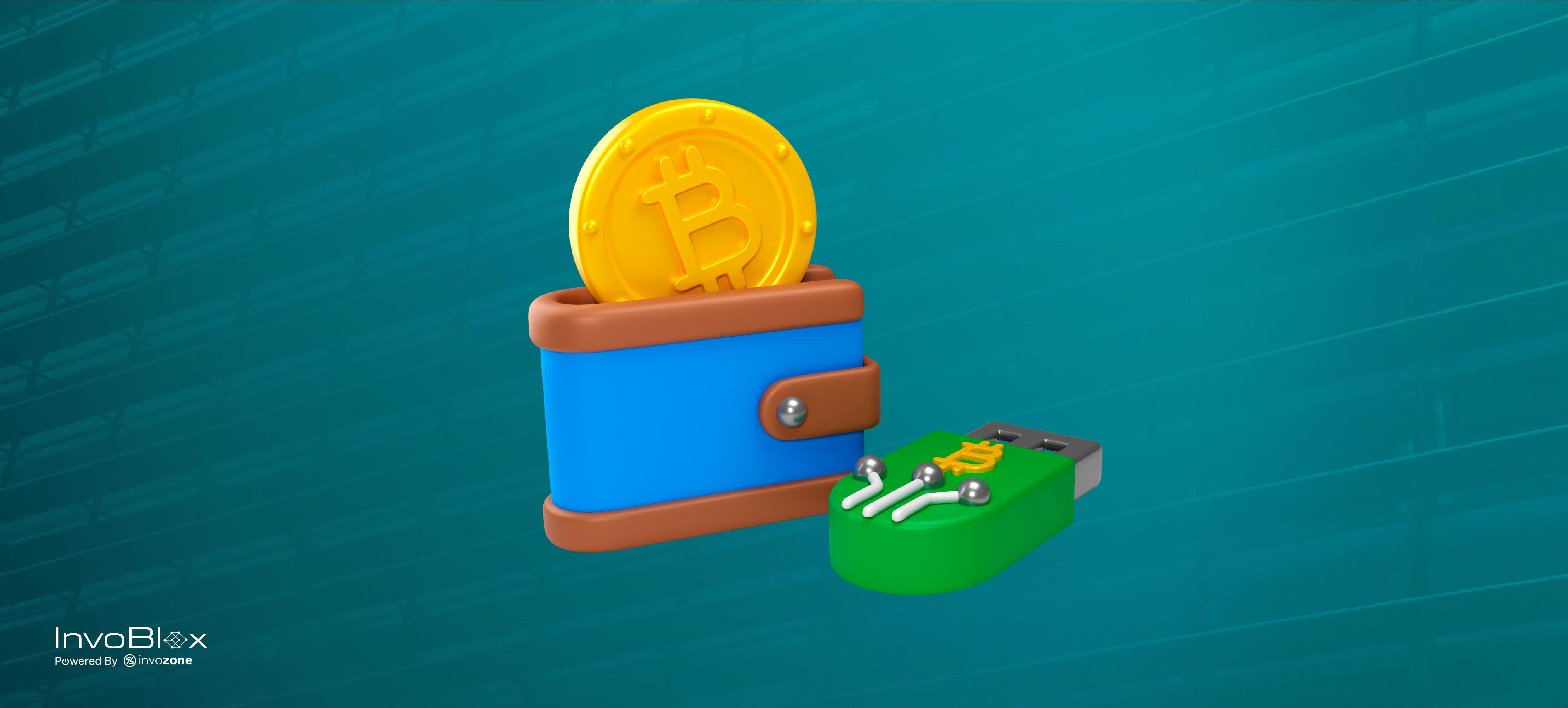
Scaling Secure Blockchain with Sharding and Zero-Knowledge Proofs
Table of Contents
In blockchain technology’s rapidly evolving and innovative landscape, two challenges that stand out prominently: privacy and scalability. As blockchain technologies and networks continue to gain traction and attract more users, investors, and stakeholders, the need for effective and efficient scaling blockchain sharding solutions becomes increasingly seen.
Simultaneously, the demand for enhanced and advanced privacy measures to protect sensitive/crucial data within these blockchain networks grows stronger. This is where the concepts of Sharding and Zero-Knowledge Proofs (ZKPs) jump in as the most advanced solutions, each addressing a unique feature of these challenges.
Sharding: Scaling Blockchain Networks
ZKPs: Security and Privacy
What is Sharding?
Imagine a capital city divided into districts, each with its own resources and infrastructure. Similarly, sharding blockchain brings the same idea to the world of blockchain technology. It allows dividing a blockchain network into smaller partitions or chunks known as shards. These shards can process transactions freely and simultaneously, significantly escalating the network's throughput and scalability; thus sharding blockchain explained.
How Sharding Works?
Sharding involves segmenting the transaction load across more than shards. Instead of each node on the network validating every transaction, each shard is fully responsible/chargeable for validating transactions inside its jurisdiction. These shards operate as parallel chains, interacting through a prime/main or beacon chain. Cross-links connect the shards to the main chain, ensuring data consistency and security.
The pros and cons of sharding blockchain are numerous. Through sharding, blockchain networks can grow higher transaction throughput, much-reduced latency, and better overall network scalability. Ethereum 2.0, the much-anticipated upgrade to Sharding Ethereum Blockchain, is a prominent example of a project adopting sharding to overcome its current scalability limitations to benefit users.
Existing Sharding Blockchain Projects
1. Ethereum 2.0:
Architecture of the Sharding Ethereum transition promises to lift its scalability by enabling more shards to process transactions simultaneously.
How it's Implemented:
Ethereum 2.0 introduces sharding in multiple phases:
- Phase 1 (Shard Chains): The network is divided into shard chains, each responsible for processing particular transactions and smart contracts. These shard chains operate parallel, boosting the network's overall transaction capacity.
- Phase 2 (Transition): Ethereum 2.0 transitioned from the proof-of-work consensus to proof-of-stake. The base/original Ethereum chain became one of the shard chains, maintaining its security with the main beacon chain.
2. Ziliqa:
The Zilliqa blockchain is designed from the base to implement sharding blockchain centralized, gaining high throughput and faster transactions.
How it's Implemented:
Zilliqa's sharding approach involves:
- Network of Shards: The platform comprises multiple shard chains, each processing its smart contracts and transactions in parallel.
- Consensus Mechanism: Zilliqa uses a practical Byzantine fault tolerance (pBFT) consensus mechanism within every shard, ensuring secure and faster validation.
- Cross-Shard Communication: Communication between shards is enabled, allowing transactions involving multiple shards to be efficiently and effectively processed.
3. Near Protocol:
Near Protocol employs sharding to deliver improved and advanced performance and efficiency, making it suitable for various decentralized applications.
How it's Implemented:
Near Protocol's sharding implementation includes:
- Shard Chains: The platform employs more than one shard chain, each handling specific transactions and smart contracts, leading to parallel processing with improved scalability.
- Nightshade Consensus: Near uses the "Nightshade" consensus mechanism, which combines a variety validator types and roles to enhance security and performance.
- Horizontal Scalability: The network can dynamically add new shards as much as needed, ensuring scalability with increasing demand.
Each project utilizes sharding in blockchain to address scalability challenges and enhance transaction processing. While their implementations are different, the overarching aim is to overcome the limitations of traditional blockchain structures. These implementations are very complex and continually evolving, reflecting the current development of every project.
What are Zero-Knowledge Proofs (ZKPs)?
While sharding focuses on scalability, Zero-Knowledge Proofs (ZKPs) address the critical need for privacy and security. A Zero-Knowledge Proof is a cryptographic method that allows one party (the prover) to demonstrate the validity of a statement to another party (the verifier) without revealing any additional information about the word itself.
Types of Zero-Knowledge Proofs
ZKPs come in several flavors, including:
1. zk-SNARKs: zk-SNARKs allow for efficient data verification, making them suitable for private transactions and reducing the computational burden.
2. zk-STARKs: It offers transparency while achieving scalability, making them applicable for a wide range of use cases.
3. Bulletproofs: Focusing on efficient range proofs, Bulletproofs ensure data integrity without disclosing sensitive details.
Applications of Zero-Knowledge Proofs
1. Privacy in Transactions: ZKPs enable parties to prove they possess certain information without revealing it. This is particularly useful for private transactions, where financial details are kept confidential.
2. Authentication: Zero-Knowledge Proofs pave the way for passwordless logins and authentication methods. Users can prove their identity without sharing their actual credentials.
3. Data Sharing: ZKPs allow parties to prove the authenticity of data without revealing the data itself. This is especially relevant in industries that require data validation without compromising confidentiality.
Existing Projects Using ZKPs
1. Ethereum 2.0: Although Ethereum 2.0 prioritizes scalability through blockchain sharding technology, it also recognizes the significance of privacy. While ZKPs aren't a central focus of this upgrade, Ethereum 2.0 remains open to exploring their incorporation in various applications to bolster privacy.
2. Zcash: Zcash employs zk-SNARKs to provide users with shielded transactions, where the transaction details are hidden from the public ledger.
3. StarkWare: StarkWare leverages zk-STARKs to enhance scalability and privacy, opening doors to various applications, including decentralized exchanges.
4. Polygon 2.0: Polygon zkEVM is a Layer 2 scaling solution that enables developers to execute arbitrary transactions, including smart contracts off-chain, rapidly and inexpensively while keeping all proofs and data provenance on the secure Ethereum blockchain.
Convergence of Sharding and ZKPs
As blockchain networks evolve, the synergy between sharding and ZKPs becomes evident. Combining these two technologies can yield a network that scales efficiently and safeguards user privacy. The challenges lie in ensuring the seamless integration of these complex techniques while maintaining security and usability.
Future Prospects and Challenges
Sharding and Zero-Knowledge Proofs hold a promising future. As these technologies mature and gain wider adoption, blockchain networks may finally overcome the scalability trilemma – achieving a balance between scalability, security, and decentralization. However, the challenges, such as the complexity of implantation and education, remain to be tackled.
Polygon Labs has proposed a groundbreaking upgrade for Polygon PoS, introducing zkEVM validium—a novel Layer 2 solution secured by ZK proofs. This step aligns Polygon PoS with the Polygon 2.0 vision of scalability and unified liquidity powered by ZK technology. The upgrade aims to enhance security, scalability, and interoperability, showcasing Polygon's commitment to innovation within the community. This transformation could mark a significant milestone for Polygon's future if adopted.
Conclusion
Sharding divides a blockchain into smaller shards, boosting transaction throughput and scalability—Ethereum 2.0, Zilliqa, and Near Protocol showcase practical sharding implementations for higher and more effective efficiency.
ZKPs and Sharding are two major innovations to make a blockchain secure and scalable, while Zero-Knowledge Proofs (ZKPs) address privacy concerns by providing statements without revealing data. Zero-Knowledge Proof’s types like zk-SNARKs, zk-STARKs, and Bulletproofs sorted the use in private transactions, authentication, and data sharing. Zcash, StarkWare, and Polygon 2.0 exemplify ZKPs' applications.
This could be a fantastic achievement if we combine both (Sharding and the Zero Knowledge Proofs) to have the fastest and the most secure network with scalability efficiency.
Want to scale up your existing blockchain network or make it more secure? Contact us at InvoBlox and leverage the power of sharding and Zero-knowledge Proofs to build a tailored blockchain solution that meets your unique requirements.
Table of Contents
In blockchain technology’s rapidly evolving and innovative landscape, two challenges that stand out prominently: privacy and scalability. As blockchain technologies and networks continue to gain traction and attract more users, investors, and stakeholders, the need for effective and efficient scaling blockchain sharding solutions becomes increasingly seen.
Simultaneously, the demand for enhanced and advanced privacy measures to protect sensitive/crucial data within these blockchain networks grows stronger. This is where the concepts of Sharding and Zero-Knowledge Proofs (ZKPs) jump in as the most advanced solutions, each addressing a unique feature of these challenges.
Sharding: Scaling Blockchain Networks
ZKPs: Security and Privacy
What is Sharding?
Imagine a capital city divided into districts, each with its own resources and infrastructure. Similarly, sharding blockchain brings the same idea to the world of blockchain technology. It allows dividing a blockchain network into smaller partitions or chunks known as shards. These shards can process transactions freely and simultaneously, significantly escalating the network's throughput and scalability; thus sharding blockchain explained.
How Sharding Works?
Sharding involves segmenting the transaction load across more than shards. Instead of each node on the network validating every transaction, each shard is fully responsible/chargeable for validating transactions inside its jurisdiction. These shards operate as parallel chains, interacting through a prime/main or beacon chain. Cross-links connect the shards to the main chain, ensuring data consistency and security.
The pros and cons of sharding blockchain are numerous. Through sharding, blockchain networks can grow higher transaction throughput, much-reduced latency, and better overall network scalability. Ethereum 2.0, the much-anticipated upgrade to Sharding Ethereum Blockchain, is a prominent example of a project adopting sharding to overcome its current scalability limitations to benefit users.
Existing Sharding Blockchain Projects
1. Ethereum 2.0:
Architecture of the Sharding Ethereum transition promises to lift its scalability by enabling more shards to process transactions simultaneously.
How it's Implemented:
Ethereum 2.0 introduces sharding in multiple phases:
- Phase 1 (Shard Chains): The network is divided into shard chains, each responsible for processing particular transactions and smart contracts. These shard chains operate parallel, boosting the network's overall transaction capacity.
- Phase 2 (Transition): Ethereum 2.0 transitioned from the proof-of-work consensus to proof-of-stake. The base/original Ethereum chain became one of the shard chains, maintaining its security with the main beacon chain.
2. Ziliqa:
The Zilliqa blockchain is designed from the base to implement sharding blockchain centralized, gaining high throughput and faster transactions.
How it's Implemented:
Zilliqa's sharding approach involves:
- Network of Shards: The platform comprises multiple shard chains, each processing its smart contracts and transactions in parallel.
- Consensus Mechanism: Zilliqa uses a practical Byzantine fault tolerance (pBFT) consensus mechanism within every shard, ensuring secure and faster validation.
- Cross-Shard Communication: Communication between shards is enabled, allowing transactions involving multiple shards to be efficiently and effectively processed.
3. Near Protocol:
Near Protocol employs sharding to deliver improved and advanced performance and efficiency, making it suitable for various decentralized applications.
How it's Implemented:
Near Protocol's sharding implementation includes:
- Shard Chains: The platform employs more than one shard chain, each handling specific transactions and smart contracts, leading to parallel processing with improved scalability.
- Nightshade Consensus: Near uses the "Nightshade" consensus mechanism, which combines a variety validator types and roles to enhance security and performance.
- Horizontal Scalability: The network can dynamically add new shards as much as needed, ensuring scalability with increasing demand.
Each project utilizes sharding in blockchain to address scalability challenges and enhance transaction processing. While their implementations are different, the overarching aim is to overcome the limitations of traditional blockchain structures. These implementations are very complex and continually evolving, reflecting the current development of every project.
What are Zero-Knowledge Proofs (ZKPs)?
While sharding focuses on scalability, Zero-Knowledge Proofs (ZKPs) address the critical need for privacy and security. A Zero-Knowledge Proof is a cryptographic method that allows one party (the prover) to demonstrate the validity of a statement to another party (the verifier) without revealing any additional information about the word itself.
Types of Zero-Knowledge Proofs
ZKPs come in several flavors, including:
1. zk-SNARKs: zk-SNARKs allow for efficient data verification, making them suitable for private transactions and reducing the computational burden.
2. zk-STARKs: It offers transparency while achieving scalability, making them applicable for a wide range of use cases.
3. Bulletproofs: Focusing on efficient range proofs, Bulletproofs ensure data integrity without disclosing sensitive details.
Applications of Zero-Knowledge Proofs
1. Privacy in Transactions: ZKPs enable parties to prove they possess certain information without revealing it. This is particularly useful for private transactions, where financial details are kept confidential.
2. Authentication: Zero-Knowledge Proofs pave the way for passwordless logins and authentication methods. Users can prove their identity without sharing their actual credentials.
3. Data Sharing: ZKPs allow parties to prove the authenticity of data without revealing the data itself. This is especially relevant in industries that require data validation without compromising confidentiality.
Existing Projects Using ZKPs
1. Ethereum 2.0: Although Ethereum 2.0 prioritizes scalability through blockchain sharding technology, it also recognizes the significance of privacy. While ZKPs aren't a central focus of this upgrade, Ethereum 2.0 remains open to exploring their incorporation in various applications to bolster privacy.
2. Zcash: Zcash employs zk-SNARKs to provide users with shielded transactions, where the transaction details are hidden from the public ledger.
3. StarkWare: StarkWare leverages zk-STARKs to enhance scalability and privacy, opening doors to various applications, including decentralized exchanges.
4. Polygon 2.0: Polygon zkEVM is a Layer 2 scaling solution that enables developers to execute arbitrary transactions, including smart contracts off-chain, rapidly and inexpensively while keeping all proofs and data provenance on the secure Ethereum blockchain.
Convergence of Sharding and ZKPs
As blockchain networks evolve, the synergy between sharding and ZKPs becomes evident. Combining these two technologies can yield a network that scales efficiently and safeguards user privacy. The challenges lie in ensuring the seamless integration of these complex techniques while maintaining security and usability.
Future Prospects and Challenges
Sharding and Zero-Knowledge Proofs hold a promising future. As these technologies mature and gain wider adoption, blockchain networks may finally overcome the scalability trilemma – achieving a balance between scalability, security, and decentralization. However, the challenges, such as the complexity of implantation and education, remain to be tackled.
Polygon Labs has proposed a groundbreaking upgrade for Polygon PoS, introducing zkEVM validium—a novel Layer 2 solution secured by ZK proofs. This step aligns Polygon PoS with the Polygon 2.0 vision of scalability and unified liquidity powered by ZK technology. The upgrade aims to enhance security, scalability, and interoperability, showcasing Polygon's commitment to innovation within the community. This transformation could mark a significant milestone for Polygon's future if adopted.
Conclusion
Sharding divides a blockchain into smaller shards, boosting transaction throughput and scalability—Ethereum 2.0, Zilliqa, and Near Protocol showcase practical sharding implementations for higher and more effective efficiency.
ZKPs and Sharding are two major innovations to make a blockchain secure and scalable, while Zero-Knowledge Proofs (ZKPs) address privacy concerns by providing statements without revealing data. Zero-Knowledge Proof’s types like zk-SNARKs, zk-STARKs, and Bulletproofs sorted the use in private transactions, authentication, and data sharing. Zcash, StarkWare, and Polygon 2.0 exemplify ZKPs' applications.
This could be a fantastic achievement if we combine both (Sharding and the Zero Knowledge Proofs) to have the fastest and the most secure network with scalability efficiency.
Want to scale up your existing blockchain network or make it more secure? Contact us at InvoBlox and leverage the power of sharding and Zero-knowledge Proofs to build a tailored blockchain solution that meets your unique requirements.
FAQS
Proof of stake is a concept of splitting consensus blocks horizontally to cater network scalability and capacity. The PoS in sharding blockchain each party must stake coins to participate in the block validation process.
Sharding is a technique that involves partitioning a blockchain's network into smaller shards, each capable of processing its transactions and smart contracts independently. The following blockchains are used in sharding.
Beacon Chain: Serves as the PoS blockchain that coordinates validators and manages the consensus protocol for Ethereum 2.0.
Zilliqa: Using sharding for parallel transaction processing.
NEAR Protocol: Utilizing Nightshade sharding design.
Polkadot: Connecting para chains for scalability.
Avalanche: Using Avalanche consensus with sharding.
CasperLabs: Developing sharded blockchain for scalability.
Elrond: Adaptive State Sharding for high throughput.
Harmony: Sharding and PoS for parallel processing.
Sharding blockchain is primarily of two types, horizontal and vertical ones. However, sharding can of many core types, including:
-
Network Sharding: Dividing the blockchain network into separate shards, each with its validators or nodes.
-
Transaction Sharding: Distributing transactions among shards based on specific criteria.
-
State Sharding: Splitting the entire state into smaller parts managed by different shards.
-
Data Sharding: Partitioning smart contract and application data across shards.
-
Hybrid Sharding: Combining various sharding approaches for better scalability.
Cross-Shard Communication: Handling interactions between shards, a challenge in sharding.
Sharding contributes to blockchain security by distributing workload over several nodes instead of validating each transaction across every node. By doing so, the possibility of one shard being hacked or overriding another reduces to a minimum.





